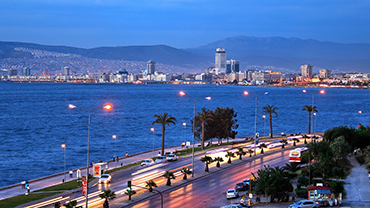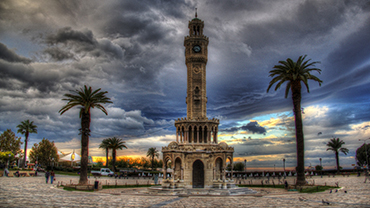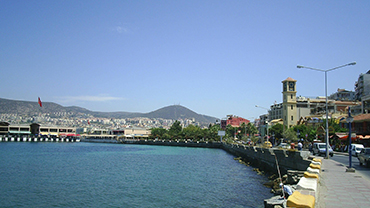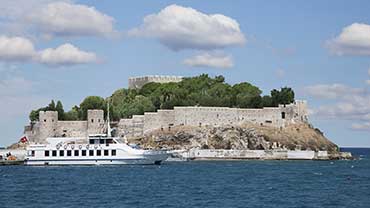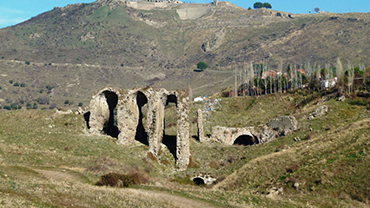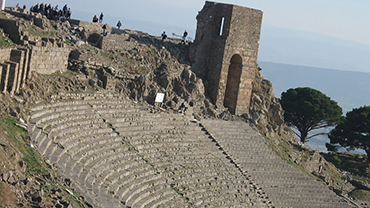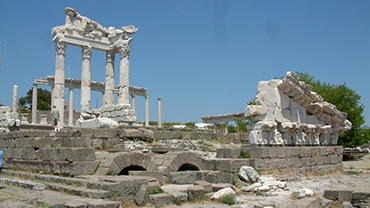Places to Visit
SYMRNA (İZMİR)
Smyrna was an ancient city located at a central and strategic point on the Aegean coast of Anatolia. Due to its advantageous port conditions, its ease of defence and its good inland connections, Smyrna rose to prominence. The ancient city is located at two sites within modern İzmir, Turkey. The first site, probably founded indigenously, rose to prominence during the Archaic Period as one of the principal ancient Greek settlements in western Anatolia. The second, whose foundation is associated with Alexander the Great, reached metropolitan proportions during the period of the Roman Empire. Most of the present-day remains date from the Roman era, the majority from after a 2nd-century AD earthquake.
The original city was established in the third millennium B.C. (at present day Bayrakli), and at that time shared, with Troia, the most advanced culture in Western Anatolia. By 1500 B.C. it had fallen under the influence of Central Anatolia’s Hittite Empire. in the first millennium B.C. Izmir, then known as Smyrna, ranked as one of the important cities of the lonian Federation; during this period – one of the city’s most brilliant – it is believed that Homer is lived here. The Lydian conquest of the city, around 600 B.C., brought this period to an end, and Izmir remained little more than a village throughout the Lydian and the subsequent 6th century B.C. Persian rule. In the fourth century B.C. a new city was built at the instigation of Alexander the Great on the slopes of Mt. Pages (Kadifekale). Izmir’s Roman period, from the first century B.C., gave birth to its second great era. Byzantine rule followed in the fourth century and lasted until the Seljuk conquest in the 11th century. In 1415, under Sultan Mehmet Celebi, Izmir became part of the Ottoman Empire.
Known in Turkish as “Beautiful Izmir”, a city of more than 4 milion citizens, lies at the head of a long and narrow gulf furrowed by ships and yachts. The climate is mild and in the summer the constant and refreshing sea breezes temper the sun’s heat. Behind the palm-lined promenades and avenues which follow the shoreline, the city, in horizontal terraces, gently ascends the slopes of the surrounding mountains. The third largest city in Turkey, Izmir’s port is second only to Istanbul’s. A cosmopolitan and lively city all year round, during the International Arts Festival (June/July) and the International Fair (August/Sept), Izmir bursts with an added vibrancy.
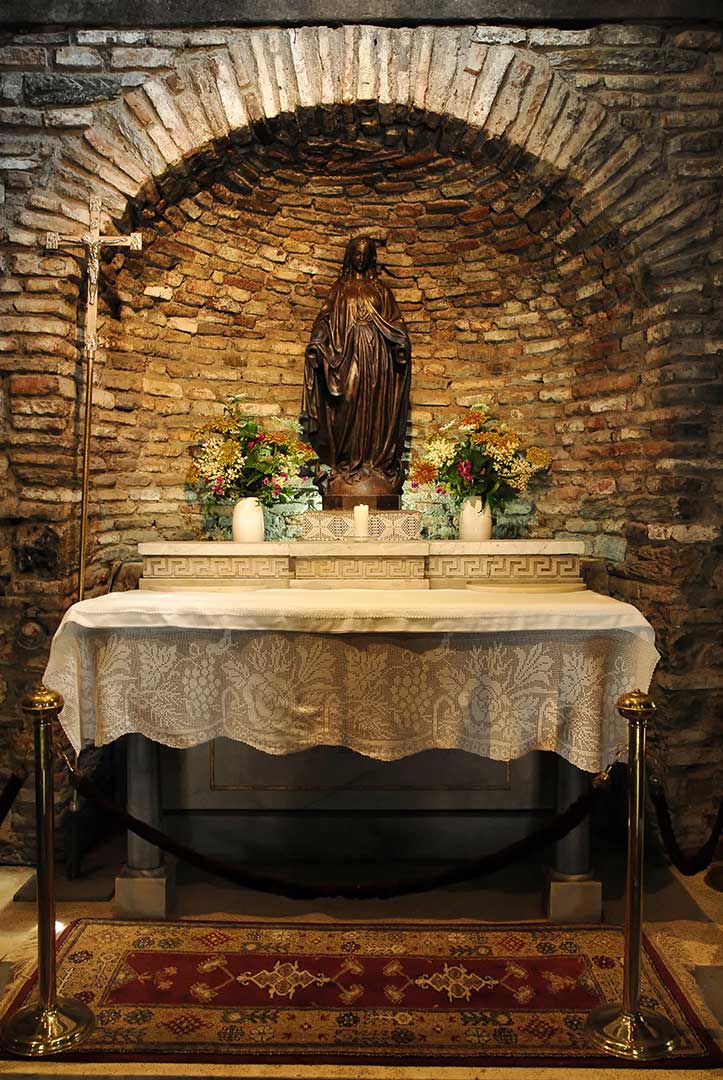
HOUSE OF VIRGIN MARY
This house is located on the top of the “Bulbul” mountain 9 km ahead of Ephesus and the shrine of Virgin Mary enjoys a marvelous atmosphere hidden in the green. It is the place where Mary may have spent her last days. Indeed, she may have come in the area together with Saint John, who spent several years in the area to spread Christianity. Mary preferred this remote place rather than living in crowded place.
Paul VI was the first Pope to visit this place in the 1960’s. Later, in the 1980’s, during his visit, Pope John-Paul II declared the Shrine of Virgin Mary is a pilgrimage place for Christians. It is also visited by Muslims who recognize Mary as the mother of one of their prophets. Every year, on August 15th a ceremony is organized to commemorate Mary’s Assumption.
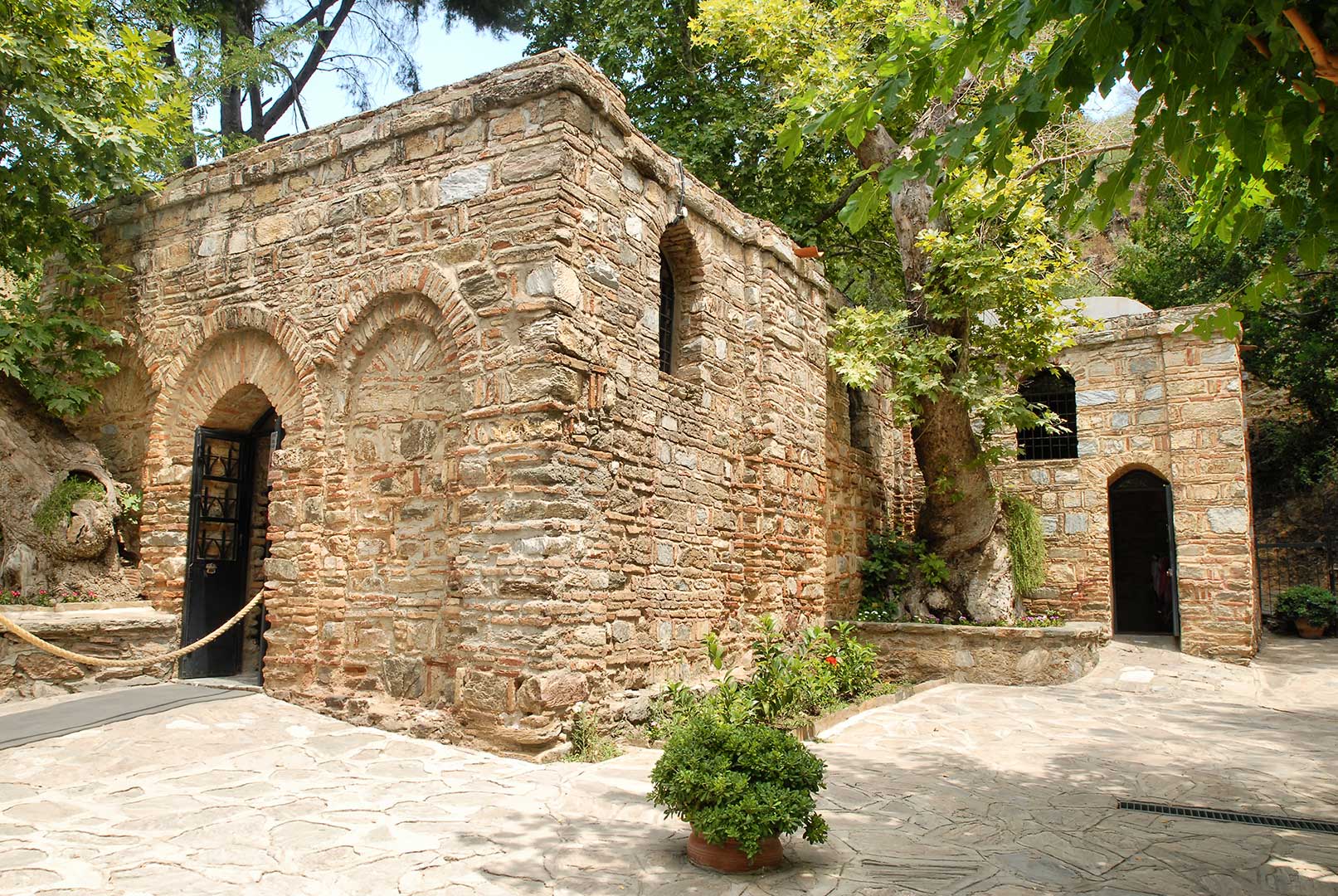
KUŞADASI
Kusadasi, a wonderful port city located within the borders of Aydin province in Turkey is situated 71 kilometres to the north-west of Aydin’s Centrum. Its distance to Izmir Centrum is approximately 95 kilometres and only 20 km to Ephesus ancient city. Kusadasi city by the Aegean Sea is one of the most important touristic centres of Turkey.
Being named after the city, Kusadasi Gulf and its immediate surroundings (due to having housed so many different civilisations) became widely known as a centre rich in its art and culture. Especially National Park of Dilek Peninsula founded in 1966 with a 25 hectare area is a very attractive point with a large flora / fauna.
The number of tourists coming to Kusadasi by cruises in 2013 is almost 950.000 and almost 600.000 by cars and buses should be added to this number.
BERGAMA
Pergamon named actually Bergama is situated at a distance of 118 km (73 miles) to the north from the point of departure of the traditional center of İzmir City Konak Square and lies at a distance of 27 km (17 miles) inland from the nearest seacoast at the town of Dikili to its west.
Known for its cotton, gold and fine carpets, the city was the ancient Greek and Roman cultural center of Pergamon State; its wealth of ancient ruins continues to attract considerable tourist interest today. Located on a promontory north of the Bakırçay (Caicos) river, 26 kilometres (16 miles) removed from the Aegean Sea, Bergama has a population of about 65,000. The ruins of the ancient city of Pergamon lies to the north and west of the modern city; Roman Pergamon is believed to have sustained a population of approximately 150,000 at its height in the 1st century AD
The Great Altar of Pergamon is in the Pergamon Museum, Berlin Germany. The base of this altar remains on the upper part of the Acropolis. It was perhaps this altar, believed to be dedicated to Zeus, that John of Patmos referred to as “Satan’s Throne” in his Book of Revelation (Revelation 2:13). A smaller frieze on a wall inside the Altar of Pergamon depicted the life of Telephos, son of Heracles and legendary founder of Pergamon
Other notable structures still in existence on the upper part of the Acropolis of Pergamon include:
• The Hellenistic Theater with a seating capacity of 14,000. This had the steepest seating of any known theater in the ancient world.
• The Sanctuary of Trajanus (also known as the Trajaneum)
• The Sanctuary of Athena
• The Library of Pergamon
• The Royal palaces
• The Heroon – a shrine where the kings of Pergamon, particularly, Attalus I and Eumenes II, were worshipped.
• The Temple of Dionysos
• The Upper Agora
• The Roman baths complex
• Diodoros Pasporos heroon
• Arsenals
Among Pergamon’s notable ruins are the Sanctuary of Asclepius as named Asclepion, a temple dedicated to an an ancient Greek god of healing, and the Red Basilica complex that straddles the Selinus River, a 2nd-century AD construction likely built by Hadrianus. The town also features an archaeological museum.

